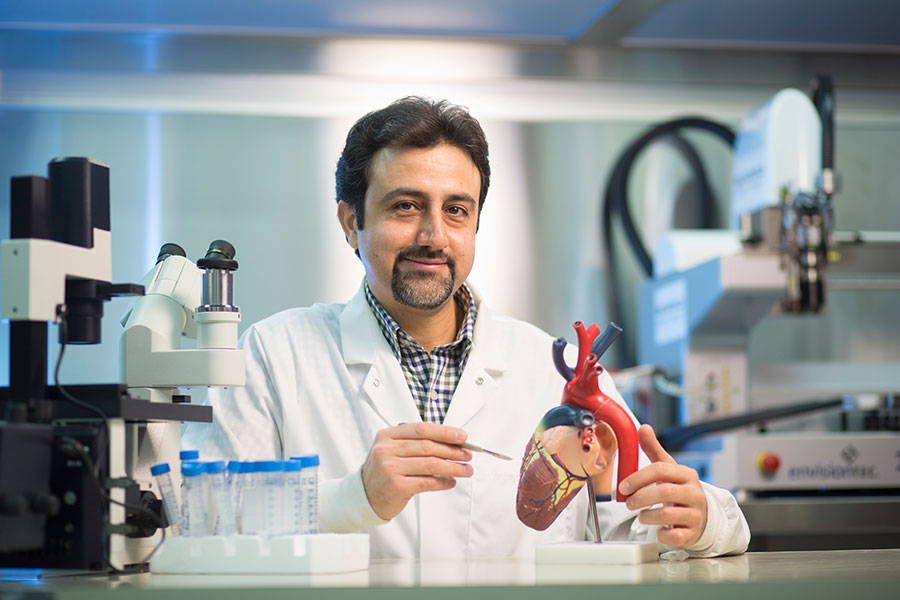
Combining medicine and engineering to repair a damaged heart
The combination of the Canadian Light Source (CLS) synchrotron’s unique biomedical imaging and therapy (BMIT) beamline and the vision of a multi-discipline researcher from the University of Saskatchewan in confirming fiction as fact was published in the September issue of Tissue Engineering, one of the leading journals in this emerging global research field of tissue regeneration.
By UNIVERSITY COMMUNICATIONS“The problem is the heart cannot repair itself once it is damaged due to a heart attack.” he explained.
Izadifar has conducted his research out of three places on campus: the College of Engineering, the CLS and the College of Medicine where he has been certified in doing open heart surgery on rats, having trained in all the ethical protocols related to these research animals.
And thanks to the confirmation photo images he has from his collaboration with the CLS, Izadifar has already proven the 3D printed human cells, which he has dubbed the “heart patch,” can start to grow as intended in theory.
Once implanted in the laboratory mice, the heart patch is invisible to regular medical imaging. Izadifar has developed an X-ray imaging technique at the CLS to monitor the 3D-printed heart patch after implanting them in the laboratory mice. The CLS-derived pictures submitted to the journal show a 3D-printed heart patch with human cells arranged in 200 micron-wide strands with the distance between each strand being 400 microns. One micron is one-thousandth of a millimeter.
Izadifar says the key in printing live human tissue is finding the right gel medium to become the “ink” for the printer.
His chosen “ink” or hydrogel is a natural, algae-based gel that is proven to be biocompatible with human body and also non-immunogenic, meaning the human body shouldn’t reject the gel. It is also biodegradable because, at some point, the body should just absorb the gel and get rid of it.
“My goal is to take stem cells from the patient and then, in-vitro, I expand and instruct them to become heart cells,” he explained.
When the heart starts absorbing the patch, those cells grow and slowly turn the 3D printed patch from soft tissue into dense, heart muscle. In the mean time, if everything is working as it should, the rat’s heart starts shooting out blood vessels into the heart patch so the new tissue gets a healthy supply of oxygen.
The key, says Izadifar, is getting the cells to align in the 3D printed heart patch, ensure they are tightly joined and that they are capable of conducting electricity, just like natural heart muscle.
“If it is to become heart tissue, the patch needs to be robust and conductive.
“With different 3D printing patterns, we can control the toughness, conductivity and cell alignment of the patch,” he said. “With the medical imaging technique that I developed at the CLS, we would be able to monitor the 3D-printed heart patch during the healing process.”

